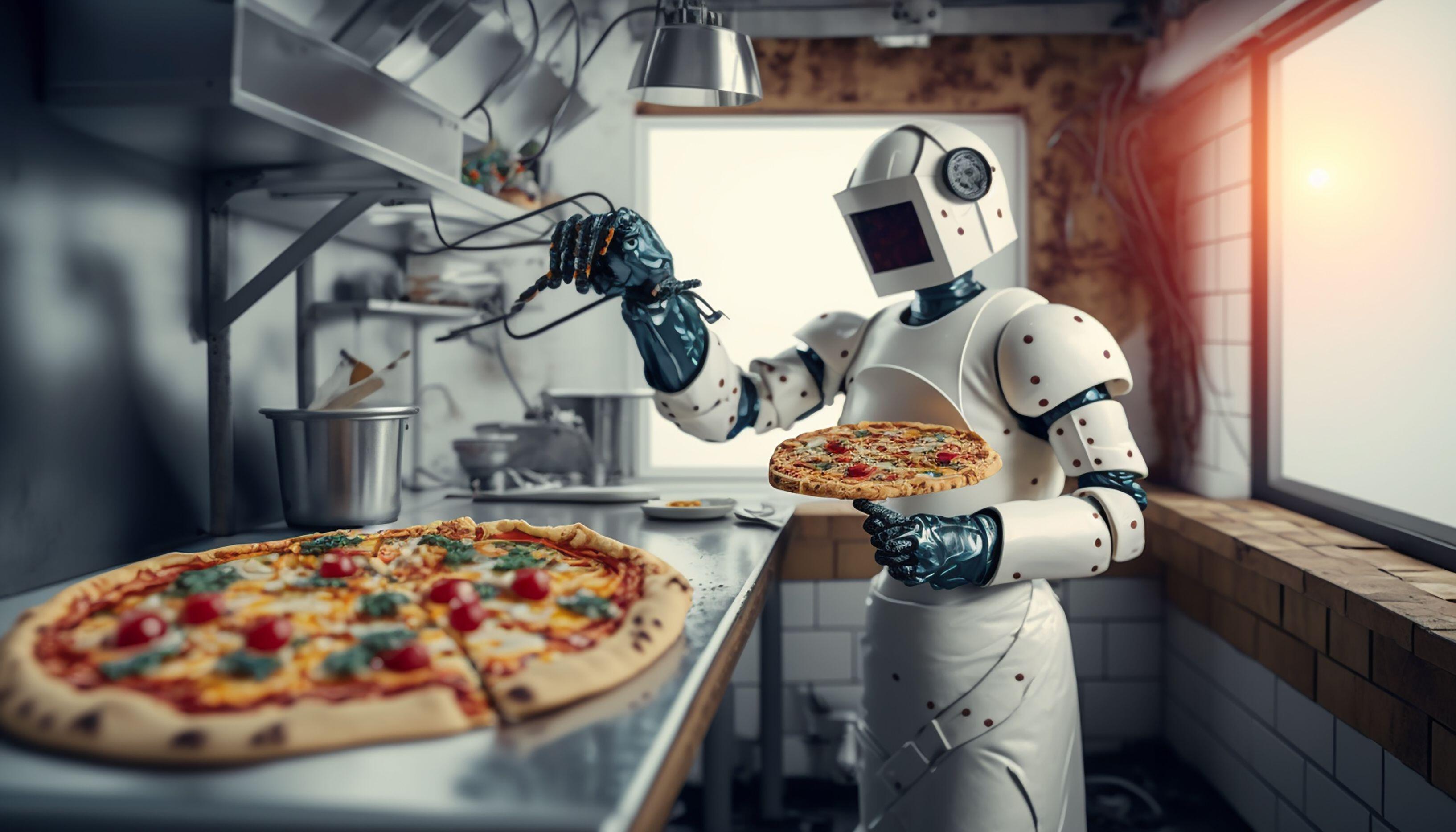Five years ago on Twitter, there was a comedy meme with the format "I forced a bot to consume [body of media], then asked it to produce [specific thing.] Here are the results," and the comedy in the results was rooted in the premise that the AI would miss nuances and engage in hilarious cultural juxtapositions. Perhaps the most famous one of these was "I forced a bot to watch over 1,000 hours of Hallmark Christmas movies and then asked it to write a Hallmark Christmas movie of its own. Here is the first page." The result was a collection of "bot-generated" lines like, "Hi. Do your snow globes lack wet? Hurry. Chrismess attacks soon," each of which skewers one of the well-documented conventions of this made-for-TV holiday movie genre.
I thought about this joke format when I watched the viral spot from a digital artist known as "Pizza Later" who released a commercial made entirely with AI-powered tools for a fictitious restaurant known as "Pepperoni Hug Spot." With a script generated by GPT-4, footage generated by Runway's Gen-2 generative AI tool, voiceovers by AI text-to-speech tools from ElevenLabs, and background music from SOUNDRAW AI Music, the only human intervention required came from editing and assembling the assorted media assets. And it was evident where human intervention was – who but a person who understands why something is funny would choose to include the line, "Our chefs make pizza with special touch – cheese, pepperoni, vegetable, and more secret things."
The juxtaposition between the almost-right results of AI-generated work and the human audience's knowledge of why the results are almost right is a great metaphor for how to look at AI in general. Are there things that AI can do more quickly, with lower overhead, than human beings? Yes. Are there things AI will screw up because it is, in effect, only as good as the data it's trained on and the tasks it's trained to do? Also yes.
There is little doubt we're reaching a point where the ways in which AI can be deployed at an end-user level will change the way people do their jobs. Workplace strategists should be mindful of how this latest technology exists on a continuum of widespread transformations that have rocked workplaces for the last forty years – personal computing, Internet access, mobile technologies, bots and automation, hybrid work.
As Pepperoni Hug Spot demonstrates, these transformative new technologies still require a human touch if they are to be deployed with the right strategic intention and to the best end results. Whenever looking at how tech will shape changes in the workplace, it's always useful to remember that employees' knowledge is one of the workplace's "more secret things."





